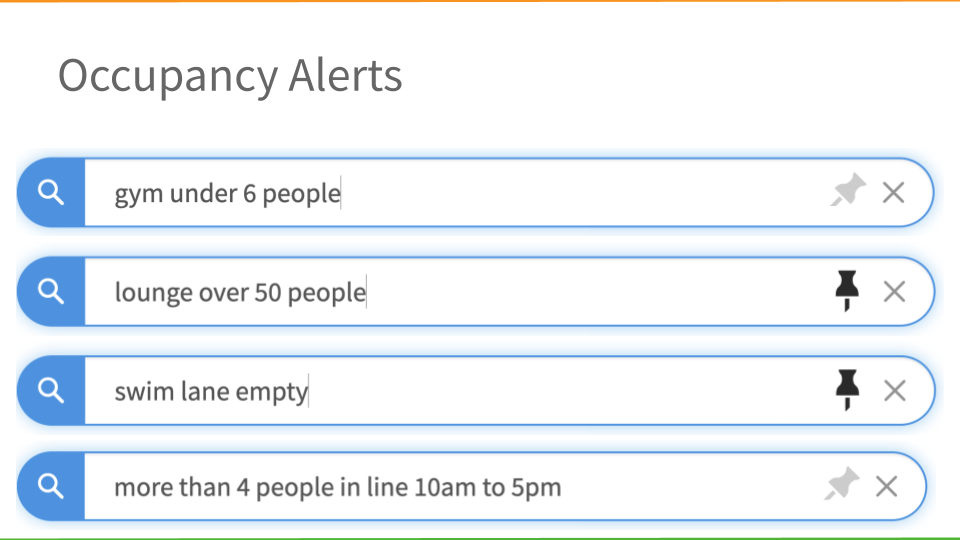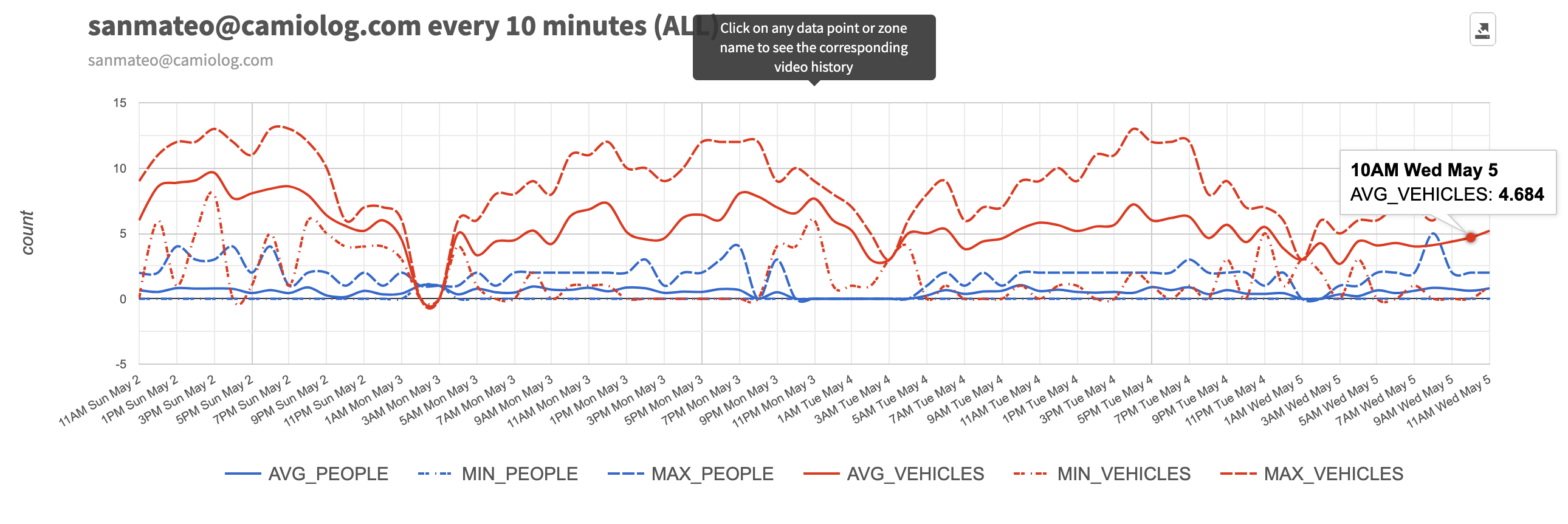Put cameras to work for inexpensive people counting
Camio Occupancy Counting and Dwell Times put existing cameras to work counting people for real-time data and alerts.

Enhance operations and safety with occupancy insights
Get automatic alerts when lines are long, waiting rooms are full, or even when gym treadmills are open. Existing cameras give insights into occupancy levels and dwell times for more informed staffing, merchandising and tenant decisions. Data is stored in Google BigQuery for universal access and integration using standard SQL.
Camio supports two occupancy counting methods:
Occupancy Sampling for periodic counts
Camio Occupancy Sampling delivers the highest ROI through variable-rate, query-based sampling using the standard field of view of existing cameras — without specialized sensors or overhead mountings. Counting is initiated by simple queries like “people west campus courtyards every 5 minutes” for the best price and performance.
Virtual Turnstiles for precise inbound and outbound counts
Virtual turnstiles provide precise positive and negative flow counts with inter-event tracking without storing PII (Personally Identifiable Information). Cameras gain a new sense of depth and understanding by segmenting and tracking people as they move on a 3D floor-plane grid. Events are uploaded to the cloud in real time and available for indexed search within an average of 14 seconds from the time of the event occurring
Dwell Times Reveal Common Patterns and Unusual Activity
Camio automatically calculates dwell time by tracking the time each individual enters and exits a particular zone. Understanding the time people spend in specific areas of retail environments improves merchandising and marketing decisions. And unusual dwell times can often highlight activity that may present a security risk.
Advanced reporting and real-time metrics uncover trends
Dashboards identify trends and compare data to prior periods. Camio also enables custom reporting that can be grouped and summarized by any dimension, including time of day, geography, zone or arbitrary tags. Trendline reports are especially useful to measure rates of change.
Flexible usage-based pricing and remote deployment
Because Camio is software-based, deploying Occupancy Counting is simply a matter of “lighting up” existing cameras. There are no client apps to download, no systems to integrate, and no proprietary apps to purchase. It’s fast and easy to get up and running—like opening a web page in any browser. And usage-based pricing makes it cost-effective.



